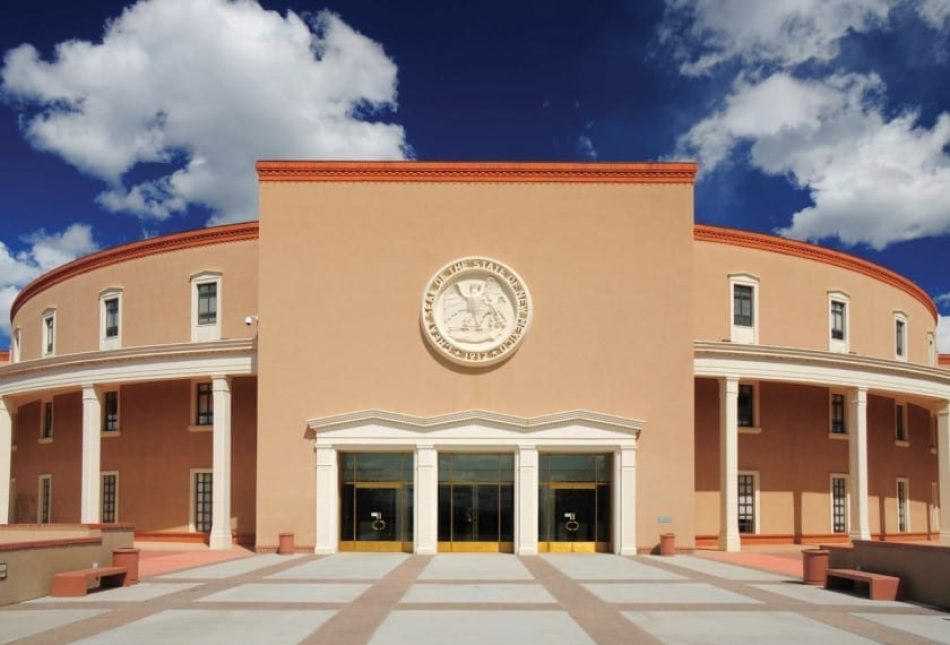Government Jobs Are Breaking Us

The recently-convened Legislature is now working to close deficits for both the current 2009 Fiscal Year and the upcoming 2010 Fiscal Year. A multitude of localities around New Mexico face similar deficits. To close these budget gaps, state and local policy-makers must include the size of government and the high level of employee compensation as part of any serious discussion about getting government spending under control.
Unlike the private sector, it is difficult for citizens to judge whether they are getting their “bang for the buck” for the goods and services the public sector provides. In a new study published by the Rio Grande Foundation, we provide an indirect way to better understand the productivity of the public sector by comparatively examining government employment and compensation levels across the 50 states.
The basis of comparison is the examination of the number of jobs and compensation in New Mexico versus the national average. There is nothing magical about the national average; however, since it represents an amalgam of 50 states, one can reasonably assume that being above the national average indicates “low productivity” among the government’s workforce and vice-versa. The following is what we found:
First of all, state and local governments employ far too many people that, in 2007, totaled 164,702 workers. This is more people than are employed in each of the top 3 biggest private sector industries including retail trade (121,258), accommodation and food services (85,558), or construction (82,267).
Overall, this translates into 24.5 workers for every 100 people employed by the state’s private sector—the 3rd highest level in the country. The national average is only 16.22. Lowering government’s employment level to that national rate would result in a far more manageable state government and a savings to taxpayers of up to $2,341,182,208.
Since there are often hundreds, if not thousands, of vacant positions in state and local government; it is possible to trim employment levels without layoffs, generating considerable taxpayer savings both now and into the future.
Not only are there too many government employees, they are paid too much. In 2007, the average state employee compensation was $45,516 while the average private-sector compensation was $41,669. As a result, New Mexico’s government employees on average receive 9.6 percent higher overall compensation than private sector employees. The national average is 0.6 percent higher pay for government employees.
The ratio of government employee compensation to private sector compensation is the 15th highest such ratio in the country. Bringing that ratio more in line with the national average would mean an additional savings to taxpayers of up to $590,045,792.
Those are real, sustainable, budget savings worth a combined $2,931,228,000. With this saving, New Mexico could either eliminate the state and local portions of the business-killing gross receipts tax ($2.5 billion in FY 2006) or eliminate the personal and corporate income tax and all state and local property taxes ($2.5 billion in FY 2006).
The high level of compensation afforded by government employees is driven in part by the extraordinary cost of the benefits they receive. Moreover, they enjoy these benefits in retirement as well. Such generous benefits packages are virtually unheard of in the private sector due to run-away costs.
The savings generated by bringing benefit levels back to the real-world would also reach well into the future. While the present-day costs of the high levels of government employment and compensation are hard for New Mexico’s taxpayers to bear, the future costs are even more enormous. The state government alone has promised its employees retirement pensions and retiree health care benefits whose projected costs stretch into the tens of billions.
More disturbingly, a considerable portion of these promised benefits are being put on the taxpayer’s credit card. In 2006, state pensions had a $4,076,390,000 unfunded liability while other post-employment benefits (primarily healthcare) had a $4,990,000,000 unfunded liability. Put simply, New Mexico’s state government has promised retirement benefits that exceed their ability to pay by over $9 billion.
In a nutshell, we find that New Mexico government exhibits a very low level of productivity relative to the workforces of other states, especially in terms of over-employment. In solving this problem by cutting the overall size of state and local government and compensation levels, policymakers will help ensure lower tax burdens for future generations as well as helping to fix today’s budgetary woes.
J. Scott Moody and Wendy P. Warcholik, Ph.D. are adjunct scholars with New Mexico’s Rio Grande Foundation. The Rio Grande Foundation is an independent, non-partisan, tax-exempt research and educational organization dedicated to promoting prosperity for New Mexico based on principles of limited government, economic freedom and individual responsibility.

